How to Fertilize Tomatoes: Advanced Techniques for First-Time Gardeners
- February 21, 2024
- 1 comment
Unlock the secrets of fertilizing tomatoes with advanced techniques ideal for first-time gardeners. Boost your harvest with our expert tips. Embarking on the journey of growing tomatoes can be both exciting and daunting for first-time gardeners. The key to a lush, bountiful harvest lies not just in how you plant your tomatoes, but significantly in how you fertilize them.
This guide is crafted to demystify the process of tomato fertilization, introducing advanced techniques that are simple enough for beginners to implement. From understanding the nutritional needs of your tomato plants to applying the right type and amount of fertilizer at the perfect time, we’re here to ensure that your gardening adventure yields fruitful results.
List of Guides on How to Fertilize Tomatoes
- Understand Your Tomato Plant’s Fertilizer Needs
- Conduct a Soil Test (Optional but Recommended)
- Choose the Right Fertilizer Type
- Apply Fertilizer Correctly
- Water After Fertilizing
- Monitor and Adjust
- Maintain a Fertilization Schedule
Understanding Tomato Plant Nutrition
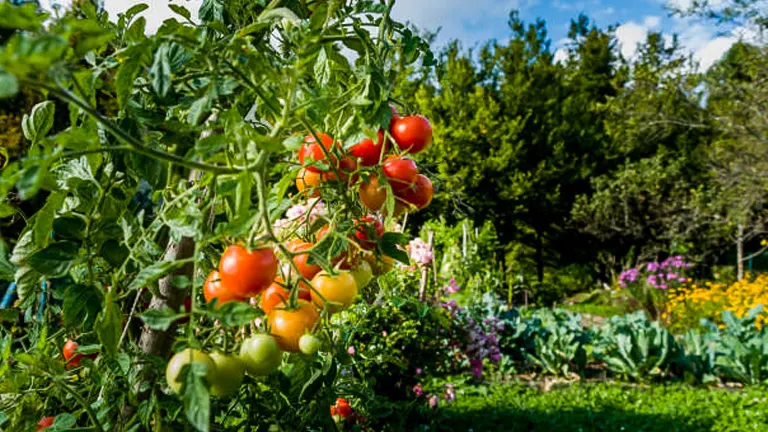
Tomato plants thrive on a complex interplay of nutrients, each fulfilling a critical role in their growth cycle and fruit production. While Nitrogen (N), Phosphorus (P), and Potassium (K) are the backbone of their nutritional needs, the story of tomato nutrition doesn’t end there. A deeper dive reveals the significance of both macronutrients and micronutrients in creating the perfect conditions for tomato plants to reach their full potential.
Macronutrients: The Big Three
- Nitrogen (N): Essential for the development of lush, green foliage, nitrogen drives vegetative growth. However, an excess can lead to overly vigorous leaf growth at the expense of fruiting.
- Phosphorus (P): Critical for root development, flowering, and fruit set, phosphorus supports the transformation from plant to produce.
- Potassium (K): Known as the “quality nutrient,” potassium plays a pivotal role in fruit development, improving size, color, and taste, while also enhancing disease resistance.
The Role of Micronutrients
Beyond the big three, micronutrients, though required in smaller quantities, are vital for the prevention of diseases and the promotion of healthy, robust growth.
- Calcium (Ca): Crucial for cell wall development, calcium deficiency can lead to blossom end rot, a common issue in tomato plants.
- Magnesium (Mg): A core component of chlorophyll, magnesium is essential for photosynthesis and energy production.
- Sulfur (S): Integral for protein synthesis and enzyme activity, sulfur also contributes to the plant’s defense mechanisms.
Detailed Nutrient Table for Tomato Plants
| Nutrient | Role in Plant Growth | Optimal Concentrations (ppm) | Practical Advice |
|---|---|---|---|
| Nitrogen (N) | Promotes vigorous leaf and stem growth. Essential in the early stages for establishing plant structure. | 200-400 | Use a balanced fertilizer in the early growth phase to encourage foliage development. Reduce nitrogen in favor of phosphorus and potassium as the plant begins to flower. |
| Phosphorus (P) | Supports root development, flowering, and the setting of fruit. Critical for energy transfer within the plant. | 30-80 | Incorporate bone meal or a high-phosphorus fertilizer at planting and during fruit set to boost root and fruit development. |
| Potassium (K) | Enhances fruit quality, improves disease resistance, and supports water regulation within the plant. | 200-500 | Apply a potassium-rich fertilizer during the fruiting phase to improve the size, color, and taste of tomatoes. Potassium also helps plants cope with drought and cold stress. |
| Calcium (Ca) | Vital for cell wall strength, leading to healthier plant tissues and prevention of blossom end rot. | 100-200 | Add gypsum or lime to the soil before planting to ensure adequate calcium levels. Water evenly to maintain consistent soil moisture and calcium uptake. |
| Magnesium (Mg) | A core element of chlorophyll, necessary for photosynthesis and overall energy production. | 50-100 | Apply Epsom salts (magnesium sulfate) during the growing season to boost chlorophyll levels and enhance photosynthesis. |
| Sulfur (S) | Plays a key role in enzyme activities, protein synthesis, and the plant’s defense mechanisms against disease. | 30-60 | Use a fertilizer containing sulfur, especially in sulfur-deficient soils, to support healthy growth and resistance to pests and diseases. |
Note: ppm (parts per million) values are general guidelines and can vary based on soil type, tomato variety, and environmental conditions.
Understanding and Managing Nutrients
- Balancing Nutrient Ratios: It’s crucial to balance nutrient ratios throughout the tomato plant’s lifecycle. Tailor your fertilization strategy to support vegetative growth early on and switch to a formula that promotes flowering and fruiting as the plant matures.
- Soil Testing: Regular soil testing is invaluable for identifying nutrient deficiencies or imbalances. This allows for targeted fertilization, ensuring your tomato plants receive exactly what they need.
- Organic vs. Synthetic Fertilizers: Consider the source of your fertilizers. Organic options release nutrients slowly and improve soil health over time, while synthetic fertilizers provide immediate nutrient availability. The choice depends on your gardening practices and the specific needs of your plants.
Types of Fertilizers for Tomatoes
Selecting the appropriate fertilizer is a pivotal decision in the journey to cultivate thriving tomato plants. The choice between organic, synthetic, and specialty fertilizers impacts not only plant health and yield but also the environment and soil ecology. Here’s a deeper dive into the characteristics of each fertilizer type and how they influence tomato cultivation.
Organic Fertilizers: These are derived from natural materials, including plant, animal, and mineral sources. Organic fertilizers improve soil structure, increase water retention, and support beneficial microbial life, contributing to long-term soil fertility.
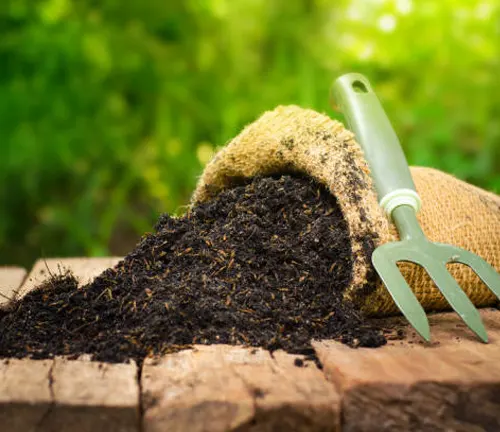
- Benefits: Enhance soil health, release nutrients slowly, reduce risk of over-fertilization.
- Considerations: Nutrient ratios are not always precise; slower nutrient release can delay immediate plant needs.
Synthetic (Inorganic) Fertilizers: Manufactured chemical compounds that provide nutrients in a more concentrated and immediately available form. They are designed for quick uptake by plants.
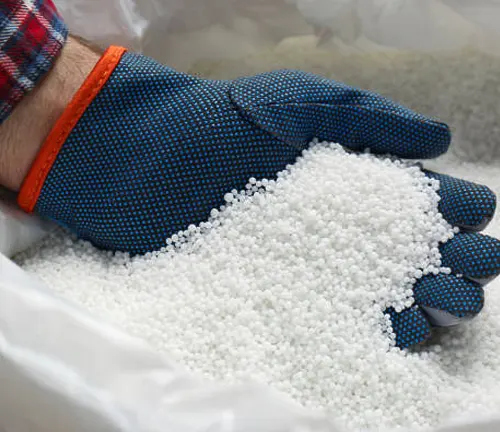
- Benefits: Precise nutrient ratios, fast-acting results, customizable for specific growth stages.
- Considerations: Potential for nutrient leaching and run-off, can harm soil microbiome over time, requires careful application to avoid plant burn.
Specialty Tomato Fertilizers: Formulated specifically for tomato plants, these fertilizers aim to balance the nutritional needs unique to tomatoes, supporting both vegetative growth and fruiting.
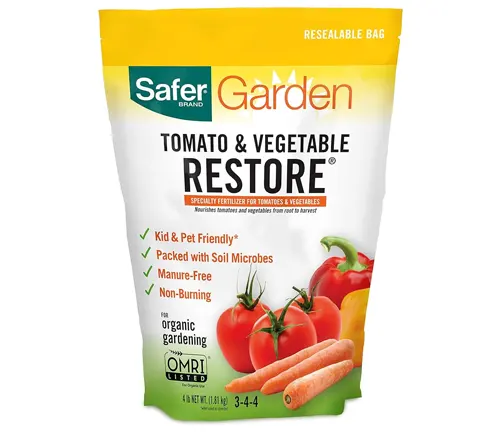
- Benefits: Tailored N-P-K ratios for tomato plants, often includes added calcium to prevent blossom end rot.
- Considerations: May be more expensive than general-purpose fertilizers; specific formulations vary by brand.
Fertilizer Comparison Table
| Fertilizer Type | Nutrient Release | Environmental Impact | Best Use | Key Components |
|---|---|---|---|---|
| Organic | Slow | Low | Long-term soil improvement | N-P-K, micronutrients, organic matter |
| Synthetic | Fast | High | Immediate nutrient supply | Precise N-P-K ratios |
| Specialty Tomato | Variable | Medium | Targeted tomato nutrition | Balanced N-P-K, calcium |
Practical Tips for Application
- Soil Testing: Before applying fertilizer, conduct a soil test to identify specific nutrient deficiencies. This ensures targeted fertilization, preventing waste and environmental harm.
- Application Timing: Organic fertilizers are best applied in advance of planting and throughout the growing season as they release nutrients slowly. Synthetic fertilizers should be used sparingly and according to growth phases—initially for growth, then reduced during flowering and fruiting. Specialty fertilizers should follow the manufacturer’s instructions, as they’re formulated for specific tomato growth stages.
- Environmental Consideration: Opt for fertilizers with low environmental impact where possible. Overuse of synthetic fertilizers can lead to nutrient runoff, harming water sources and biodiversity.
When and How Often to Fertilize Tomatoes

Understanding the right timing and frequency for fertilizing tomatoes is crucial for nurturing strong, productive plants. Fertilization schedules should be aligned with the plant’s growth stages and the specific needs of the variety being grown. Here, we’ll break down the key points to consider when planning your fertilization strategy.
Initial Fertilization: Pre-Planting Prep
- Before planting your tomatoes, incorporate a balanced, all-purpose fertilizer or well-composted organic matter into the soil. This initial step provides a nutrient-rich foundation that supports early root development and plant growth.
Post-Planting: The Growth Phase
- After your tomato plants are securely in the ground and showing signs of new growth (typically two weeks post-planting), it’s time for their first fertilization. Use a balanced fertilizer with equal parts nitrogen, phosphorus, and potassium (N-P-K). This promotes healthy leaf, stem, and root development.
Fruit Setting and Beyond: Maintenance Fertilization
- As your plants begin to flower and set fruit, their nutritional needs shift. Phosphorus and potassium become more critical for fruit development and quality. Reduce nitrogen application to prevent excessive foliage at the expense of fruit.
- Continue to fertilize every 4-6 weeks with a lower-nitrogen, higher-phosphorus, and potassium fertilizer. Liquid fertilizers are ideal during this phase for their ease of use and quick absorption by the plants.
Monitoring and Adjusting
- Keep a close eye on your plants’ health and growth. Yellowing leaves, stunted growth, or poor fruit development can signal nutrient imbalances. Adjust your fertilization practices based on these observations and consider conducting a soil test if problems persist.
Watering Considerations
- Water plays a pivotal role in nutrient uptake. Water your plants thoroughly after each fertilization to help dissolve the nutrients and facilitate their absorption through the roots. Ensure consistent soil moisture, especially during the hot, dry periods, to maintain nutrient flow to the plants.
Tailoring to Tomato Types
- Different tomato varieties may have slightly different fertilization needs. Determinate (bush) varieties, which grow to a set size and produce a single crop, may require less frequent fertilization once fruiting begins. Indeterminate (vining) varieties, which grow and produce fruit continuously throughout the season, benefit from regular fertilization throughout their growth cycle.
By following these guidelines, gardeners can ensure their tomato plants receive the right nutrients at the right times, supporting healthy growth and abundant fruit production. Remember, the best fertilization plan is one that adapts to the specific needs of your plants and the changing conditions of your garden environment.
Soil Testing and Preparation

Understanding the soil environment is crucial for the successful cultivation of tomato plants. Comprehensive soil testing goes beyond basic pH level identification, encompassing a detailed analysis of macro and micronutrient levels, soil texture, and organic matter content. This in-depth analysis allows for a tailored soil amendment strategy, optimizing conditions for tomato growth.
Key Components of Soil Analysis
- pH Level: Tomato plants thrive in slightly acidic to neutral soil, with an optimal pH range of 6.0 to 6.8. Soil pH affects nutrient availability, with extreme conditions locking certain nutrients, rendering them inaccessible to plants.
- Nutrient Profile: Identifying both deficiencies and excesses in nutrients such as Nitrogen (N), Phosphorus (P), Potassium (K), Calcium (Ca), Magnesium (Mg), and Sulfur (S) enables targeted fertilization.
- Organic Matter: High organic matter content improves soil structure, water retention, and nutrient availability. It also supports beneficial microbial life essential for plant health.
- Soil Texture: The proportion of sand, silt, and clay affects drainage and nutrient retention. Tomatoes prefer well-draining soil with good aeration.
Soil Amendment Strategies
Based on soil test results, amendments may be necessary to create the ideal growing environment for tomatoes:
- Adjusting pH Levels: Lime increases pH, while sulfur decreases it. Apply as needed to reach the optimal pH range.
- Enhancing Nutrient Availability: Use specific fertilizers to address nutrient deficiencies. Organic amendments like compost or manure can improve overall soil fertility.
- Improving Soil Structure: Incorporate organic matter to enhance water retention in sandy soils or to increase drainage in clay soils.
Simplified Soil Conditions Guide for Tomato Plants
| Soil Aspect | Ideal Range | What It Means | How to Adjust |
|---|---|---|---|
| pH Level | 6.0 – 6.8 | Suitable acidity for tomato growth. | Add lime to increase pH; add sulfur to decrease pH. |
| Nitrogen (N) | 200 – 250 ppm | Supports leaf and stem growth. | Add compost for a slow release; use a nitrogen-specific fertilizer for immediate need. |
| Phosphorus (P) | 30 – 80 ppm | Essential for roots and fruits. | Use bone meal or a phosphorus-rich fertilizer to boost levels. |
| Potassium (K) | 200 – 300 ppm | Important for fruit quality and plant health. | Add potash or compost to increase potassium. |
| Calcium (Ca) | 100 – 200 ppm | Prevents blossom end rot. | Apply gypsum or lime to raise calcium levels. |
| Magnesium (Mg) | 50 – 100 ppm | Needed for photosynthesis and energy. | Use Epsom salts or dolomitic lime to improve magnesium. |
| Organic Matter | 5% – 10% | Improves soil structure and nutrient availability. | Mix in compost or well-rotted manure to enhance organic content. |
Note: ppm = parts per million. The recommendations provided are general guidelines. Adjustments should be tailored to your soil’s current condition, as determined by a soil test.
Key Takeaways for Gardeners:
- pH Level: Ensuring your soil’s pH is within the ideal range is crucial for nutrient uptake. A simple pH test kit can help you determine if adjustments are needed.
- Nutrient Balance: Balanced N-P-K (Nitrogen, Phosphorus, Potassium) levels are foundational for healthy tomato plants. Each nutrient plays a specific role in plant development and fruit production.
- Calcium and Magnesium: These micronutrients are vital but often overlooked. They support plant structure and photosynthesis, contributing to overall health and productivity.
- Organic Matter: Incorporating organic matter into your soil not only feeds your tomato plants but also improves soil health, promoting a vibrant, sustainable garden ecosystem.
Step-by-Step Guide on How to Fertilize Tomato Plants
Step 1: Understand Your Tomato Plant’s Fertilizer Needs
- Timing: Tomato plants need different nutrients at various stages of their growth. Initially, they require more nitrogen to support leaf and stem growth. As they start flowering and setting fruit, the need shifts towards phosphorus and potassium for fruit development.
- Formulation: Look for a fertilizer labeled for vegetables or specifically for tomatoes, indicating a balanced N-P-K ratio that’s suited for the initial stages, and consider switching to a lower-nitrogen, higher-phosphorus, and potassium formula as the plant matures.
Step 2: Conduct a Soil Test (Optional but Recommended)
- A soil test can provide invaluable information about the nutrient content and pH of your soil. This step is especially crucial if you’re gardening in a new space or have experienced problems in the past. It will help you select the right fertilizer and determine if any adjustments to the soil pH are needed before fertilization.
Step 3: Choose the Right Fertilizer Type
- Organic Options: These include compost, manure, bone meal, and blood meal. They release nutrients slowly and improve soil health over time.
- Synthetic Options: Fast-acting and containing precise nutrient ratios, synthetic fertilizers are suitable for addressing immediate nutrient deficiencies.
- Specialty Tomato Fertilizers: Formulated to meet the specific needs of tomato plants, these can be a convenient choice for ensuring balanced nutrition.
Step 4: Apply Fertilizer Correctly
- Initial Application: Mix the recommended amount of fertilizer into the soil at planting time. For granular types, follow the label instructions regarding the amount per plant or per square foot.
- Side-Dressing: Once your tomato plants have established and show signs of new growth, apply a side-dressing of fertilizer around the base of the plants, about 6-8 inches from the stem to avoid direct contact with the roots. This method is especially useful for providing a nutrient boost during the growing season.
- Liquid Fertilizers: If using liquid fertilizers, apply them directly to the soil around the plants rather than on the foliage. This ensures that the nutrients are where the roots can absorb them. Follow the dilution rates on the label.
Step 5: Water After Fertilizing
- Watering helps dissolve and distribute the fertilizer into the soil, making nutrients more accessible to the plant’s roots. Ensure you water the soil gently but thoroughly after each fertilization.
Step 6: Monitor and Adjust
- Observe your plants after fertilizing for signs of over or under-fertilization (e.g., yellowing leaves or lush green growth with little fruit). Adjust your fertilization practices as needed, based on plant performance and soil test results.
Step 7: Maintain a Fertilization Schedule
- Throughout the growing season, continue to fertilize every 4-6 weeks, adjusting based on the plant’s growth stage and nutritional needs. Reduce or stop fertilizing once the plant begins to fruit, to encourage energy to go towards fruit production rather than leaf growth.
Final Tips:
- Always follow the manufacturer’s instructions on the fertilizer packaging to avoid over-fertilization.
- Consider incorporating compost or other organic matter into your soil regularly to naturally boost nutrient levels and improve soil health.
Planting Density and Spacing for Optimal Growth
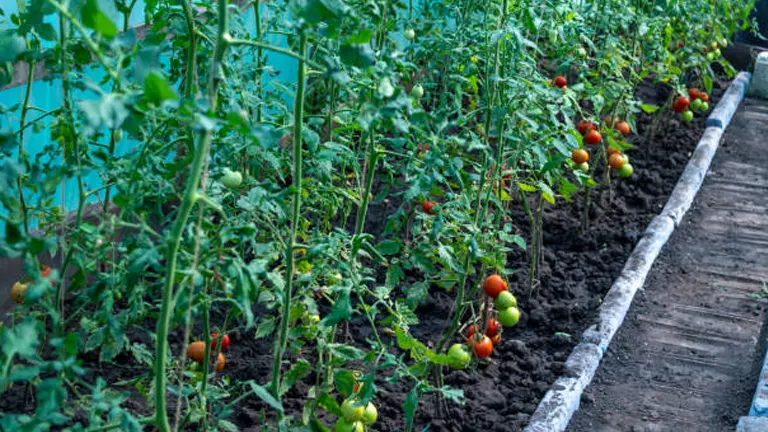
Spacing is not just about fitting as many plants into an area as possible; it’s about optimizing each plant’s environment for sunlight, air circulation, and nutrient access. Proper spacing helps prevent the spread of diseases, which tomatoes are particularly prone to when overcrowded. It also affects the ease of maintenance activities such as pruning, staking, and harvesting.
Medium-Density Farming
- Spacing Guidelines: For indeterminate (vining) varieties that grow throughout the season, space plants 18-24 inches apart with rows 3-4 feet apart. This spacing allows for adequate air flow and sunlight penetration, reducing the risk of fungal diseases.
- Benefits: This arrangement supports healthy growth and facilitates maintenance activities, including pruning and harvesting.
High-Density Planting
- Urban and Small-Space Gardening: In constrained spaces, tomatoes can be planted more closely, but this increases the need for careful management of water and nutrients to prevent stress and competition.
- Spacing Strategy: Aim for 12-18 inches between plants and 2-3 feet between rows. Consider using trellising or staking to maximize vertical space and improve air circulation among plants.
- Considerations: Increased monitoring for signs of stress or disease is necessary, as is a more diligent pruning regimen to maintain plant health.
Staking and Trellising
- Support Systems: Providing support through staking or trellising not only helps manage plant growth and health but also optimizes space usage. It facilitates better air flow around plants and more efficient exposure to sunlight.
- Implementation: Install stakes or trellises at planting to avoid disturbing the roots later on. Secure plants gently to the supports as they grow.
Impact on Disease Management
- Proper spacing and the use of support structures significantly reduce the risk of diseases by improving air circulation and reducing leaf wetness, two factors that contribute to fungal and bacterial disease outbreaks in tomato plants.
Nutrient and Water Management
- Spacing and Nutrient Access: Adequate space between plants ensures that each has sufficient access to the nutrients in the soil, reducing competition and stress.
- Watering Practices: Drip irrigation or soaker hoses are recommended to deliver water directly to the soil, minimizing leaf wetness and disease risk. Adjust watering frequency based on plant spacing, with closer-spaced plants potentially requiring more frequent watering.
Pruning Techniques in Conjunction with Fertilization
For tomato plants, the strategic combination of pruning and fertilization is crucial for directing energy towards fruit production and ensuring the plant utilizes nutrients efficiently. Here’s how to integrate pruning with fertilization practices specifically for tomatoes, enhancing both plant health and yield.
Key Pruning Techniques for Tomato Plants
- Suckering for Determinate and Indeterminate Varieties:
- Determinate Varieties: These bush-type tomatoes generally do not require suckering, as they naturally grow to a compact size and produce a concentrated fruit set.
- Indeterminate Varieties: Vigorous vine-type tomatoes benefit from regular suckering. Removing suckers from the axils ensures the plant’s energy is directed towards producing and ripening fruit, rather than vegetative growth.
- Lower Leaf Removal to Promote Health:
- Removing leaves from the bottom 12 inches of the plant helps reduce the risk of soil-borne diseases and improves air circulation, crucial for plant health. This practice is particularly beneficial after the first fruit set, aligning with targeted fertilization to support fruit development.
- Topping Off to Focus Energy on Ripening:
- Late in the growing season, trimming the top of indeterminate tomato plants can stop vertical growth, channeling the plant’s resources into ripening existing fruits rather than producing new ones.
Practical Considerations for Tomato Pruning
- Use the Right Tools: Clean, sharp pruning shears are essential to make clean cuts and avoid damaging the plants.
- Ideal Timing: Prune in the morning on a dry day to allow cut areas to heal quickly, reducing disease risk.
- Observe and Adjust: Monitor your plants’ response to pruning and fertilization, adjusting your techniques as needed based on the plant’s health and the development of the fruit.
Nutrient Absorption Optimization
Pruning in conjunction with proper fertilization helps tomato plants to more effectively absorb and utilize nutrients. By reducing the plant’s vegetative mass through strategic pruning, nutrients can be redirected towards the development of robust, flavorful fruits.
Monitoring Plant Health and Adjusting Fertilization

As your tomato plants grow, keeping a vigilant eye on their health can provide clues to their nutritional needs. Symptoms of nutrient deficiencies vary but can include yellowing leaves (nitrogen deficiency), poor fruit development (phosphorus deficiency), and weak stems and leaf curl (potassium deficiency). Conversely, signs of over-fertilization may include dark green, lush foliage with little to no fruit production. To adjust fertilization practices:
- Reduce Fertilizer Use: If symptoms of over-fertilization occur, cut back on the amount of fertilizer and increase watering to help flush out excess nutrients.
- Supplement Missing Nutrients: For deficiencies, a targeted fertilizer supplement can correct the imbalance. Always follow package directions to avoid further issues.
Common Fertilization Mistakes and How to Avoid Them
1. Over-Fertilizing: Finding the Balance
- Consequences: Applying too much fertilizer can lead to “fertilizer burn,” where plant roots are damaged, and growth is stunted. Excess nitrogen can encourage leafy growth at the expense of fruit production.
- Prevention: Use a scale or measuring spoon to accurately measure fertilizer according to package directions or soil test recommendations. Consider using slow-release fertilizers, which are less likely to overdose plants.
2. Ignoring Soil pH: The Nutrient Gatekeeper
- Consequences: An incorrect pH level can lock out essential nutrients, making them unavailable to your plants, regardless of how much fertilizer you apply.
- Prevention: Use a soil pH test kit available at garden centers. If the pH is too low (acidic), apply garden lime; if it’s too high (alkaline), use elemental sulfur. Re-test and adjust periodically to maintain the optimal range.
3. Neglecting Organic Matter: The Foundation of Fertile Soil
- Consequences: Soil lacking in organic matter can become compacted and nutrient-poor, leading to weak plant growth and low yields.
- Prevention: Annually incorporate compost, aged manure, or leaf mold into the soil. These materials improve soil structure, enhance moisture retention, and slowly release nutrients.
4. Fertilizing at the Wrong Time: Timing is Everything
- Consequences: Applying fertilizer when plants are not ready to absorb it can waste resources and potentially harm your plants. For example, high-nitrogen fertilizer applied late in the season can delay fruit ripening.
- Prevention: Follow a fertilization schedule that aligns with your tomato plants’ growth stages. Start with a balanced fertilizer at planting, switch to a low-nitrogen, high-phosphorus formula at flowering, and reduce or stop fertilization once fruits begin to mature.
5. Overlooking Micronutrient Needs: The Devil is in the Details
- Consequences: While macronutrients get most of the attention, micronutrient deficiencies (like magnesium, calcium, and iron) can also hinder plant growth and fruit development.
- Prevention: Use a broad-spectrum, balanced fertilizer that includes micronutrients. In areas with known deficiencies, consider soil amendments specific to the lacking mineral, such as Epsom salts for magnesium.
6. Ignoring Fertilizer Compatibility: Not All Fertilizers Get Along
- Consequences: Mixing incompatible fertilizers or applying them too close together can cause nutrient lockout, where plants cannot access certain nutrients, or chemical reactions that can harm plants.
- Prevention: Research and follow compatibility guidelines when using multiple fertilization products. Ensure there is an appropriate interval between different fertilizer applications.
Conclusion
In conclusion, the journey to proficiently fertilizing tomatoes, especially for first-time gardeners, is paved with learning advanced techniques that go beyond basic care. Understanding the critical balance of nutrients, the importance of soil health, and the timing of applications are fundamental to nurturing thriving tomato plants. This guide has distilled essential practices—ranging from soil testing and amendment to precise nutrient management and strategic pruning—into actionable insights. By adhering to these guidelines, gardeners can not only avoid common pitfalls but also optimize their tomato plants’ growth, health, and productivity, leading to a rewarding and fruitful gardening experience.
FAQs
- Can I use coffee grounds as a fertilizer for my tomato plants?
Yes, coffee grounds can be an excellent organic fertilizer for tomatoes, providing a good source of nitrogen as well as acidity to the soil, which tomato plants appreciate. However, use them sparingly and preferably composted, as fresh grounds may inhibit growth due to their high acidity. - How does the time of day affect fertilizing my tomato plants?
The best time to fertilize tomato plants is early in the morning or late in the afternoon, avoiding the hottest part of the day. This timing helps reduce the evaporation of water, ensuring that your plants have ample time to absorb the nutrients effectively. - Can banana peels be used as a fertilizer for tomatoes?
Absolutely! Banana peels are rich in potassium, an essential nutrient for tomato plant health and fruit development. Drying and grinding banana peels into a powder or burying them whole near the plant roots are effective methods to enrich the soil with potassium. - Is it necessary to adjust fertilization techniques for container-grown tomatoes?
Yes, container-grown tomatoes often require more frequent fertilization than those planted in the ground due to limited soil nutrients and quicker drying of the soil. Opt for a liquid fertilizer with a balanced N-P-K ratio, applied every two weeks, to ensure steady growth. - How does mulching affect the fertilization of tomato plants?
Mulching benefits tomato fertilization by helping to retain soil moisture, regulate soil temperature, and reduce weed competition. Organic mulches like straw or wood chips can also break down over time, adding nutrients back into the soil. - Can over-fertilization harm my tomato plants?
Yes, over-fertilization can lead to “fertilizer burn,” causing leaf yellowing and potentially killing the plant. It can also encourage lush foliage growth at the expense of fruit production. Always follow recommended application rates and observe plant responses. - How do I know if my tomato plants are getting enough of each key nutrient?
Monitor your plants for specific deficiency symptoms: Nitrogen deficiency often appears as yellowing lower leaves, phosphorus deficiency can cause dark, purplish hues on leaves, and potassium deficiency may present as yellow leaf edges. Adjust your fertilization plan based on these observations. - Should I alter my fertilization strategy based on tomato variety?
Different tomato varieties, such as determinate (bush) versus indeterminate (vining), may have varying nutrient needs and growth patterns. Indeterminate varieties generally benefit from consistent fertilization as they grow and produce fruit continuously, whereas determinate types might require less frequent applications after the initial fruit set.
As you embark on this gardening adventure, remember: great tomatoes are just a season away. Happy gardening, and here’s to a bountiful harvest!

Benjamin Brooks
Forestry AuthorGreetings! I'm Benjamin Brooks, and my journey over the past 15 years has revolved around the fascinating realms of content creation, expertise in snow clearing, and the intricate world of lumberjacking and landscaping. What began as a simple curiosity about the natural world and heavy machinery has evolved into a passionate profession where my love for crafting words intertwines seamlessly with my lumberjacking and garden skills.







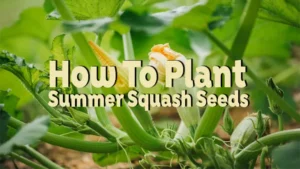



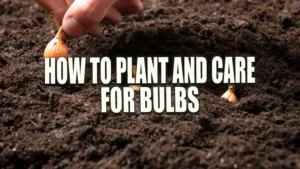

Great article very informative A good read
Peter Vandenberg
February 22, 2024 4:17 am